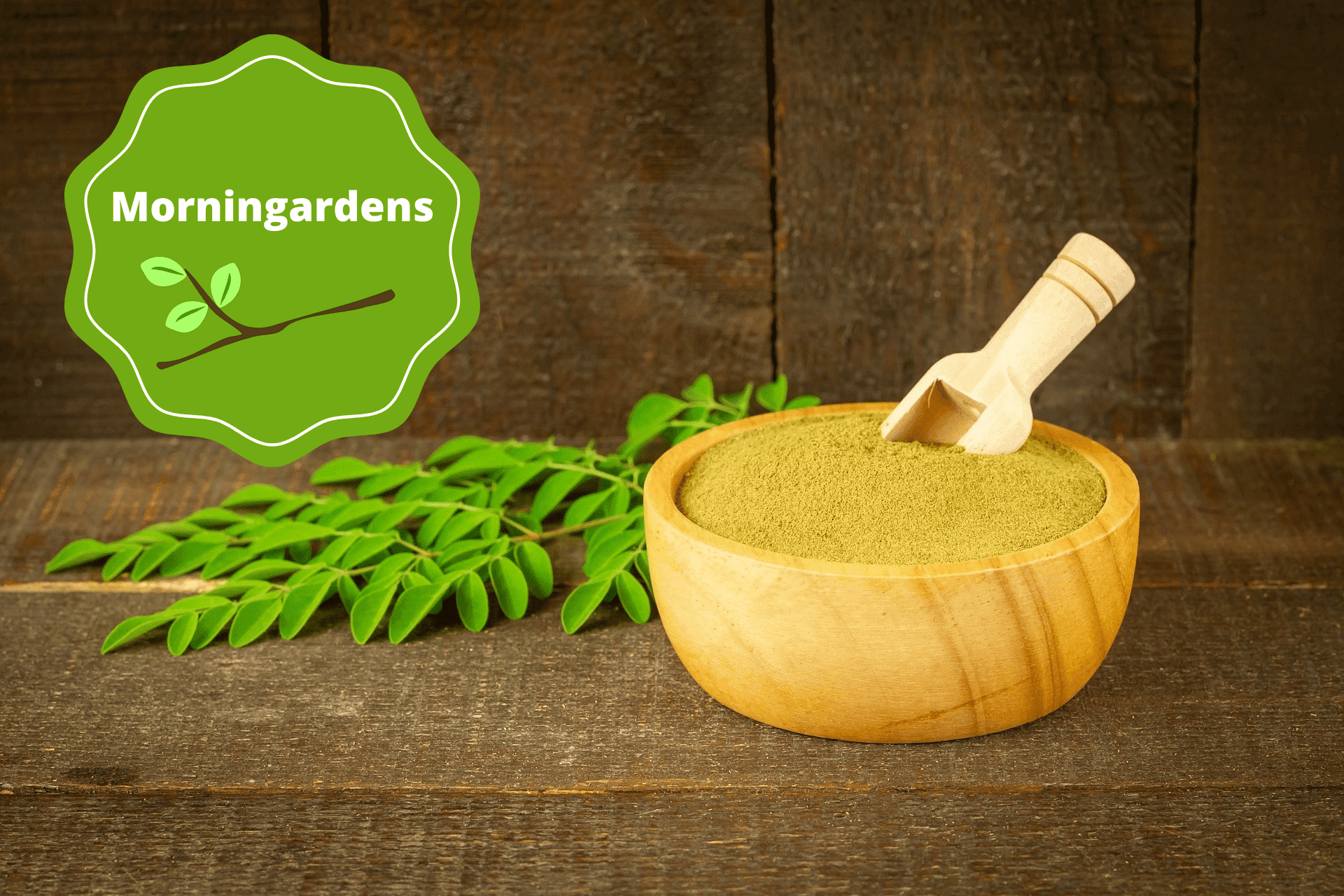If you’ve been active in the online health community over the past few years, there’s a chance you’ve heard people mention Moringa.
I tend to run into a new post every week or two; beauty bloggers raving about the effect a Moringa mask has had on their faces!
Ecstatic updates from people who’ve seen their blood pressure go down as soon as they start drinking Moringa tea!
Instagram influencers who enjoy testing any new superfood craze!
A Comprehensive Guide to Moringa Oleifera (Moringa 101)
If you haven’t heard of Moringa except in passing, though, you’re not alone. While Moringa has absolutely gained visibility over the last handful of years, it’s still definitely in the realm of the more obscure food products.
Most of the Moringa posts I’ve seen often have comment sections overflowing with questions: how does it work? Does it work? If it does work, why aren’t more people talking about it? No matter where you look, there seem to be more questions than answers.
Let’s talk answers.
What is Moringa?
Technically, the term “Moringa” refers to an entire genus of trees: a big old extended family of 13 different types of trees, all of them sort of like cousins. We’re only focusing on one of those species: Moringa Oleifera.
Moringa Oleifera, also known as the “drumstick tree”, the “horseradish tree”, and the somewhat more sensational “tree of life” and “miracle tree”, is a tree that grows mostly in tropical and subtropical countries.
Native to the Indian subcontinent (including Pakistan and Bangladesh), Moringa has traveled pretty much everywhere within the Eastern Hemisphere—Africa, Sri Lanka, Malaysia, the Philippines—and to a fair number of places in the Western Hemisphere, too. Nowadays, you can see Moringa growing almost anywhere you look, from backyards in Mississippi to gardens in Texas.
What differentiates Moringa from most trees, however, is the fact that nearly all of it is edible. It’s also ridiculously good for you.
We’ll get to nutrition facts in a bit. The first is the introduction.
What Does Moringa Look Like?
A Moringa tree is pretty easily identifiable even before its pods start growing; there’s no way you’re ever going to look at a Moringa and mistake it for pine or oak.
Moringa trees are slight: even with small hands, I’m able to circle them almost entirely around the trunk of our trees.
Their trunks grow widest at the base, and much slimmer the taller the tree gets. Their trunks tend towards a light ash-gray color, and the bark is smooth.
Most Moringa trees grow between 5 and 8 meters (or between 16 and 24 feet).
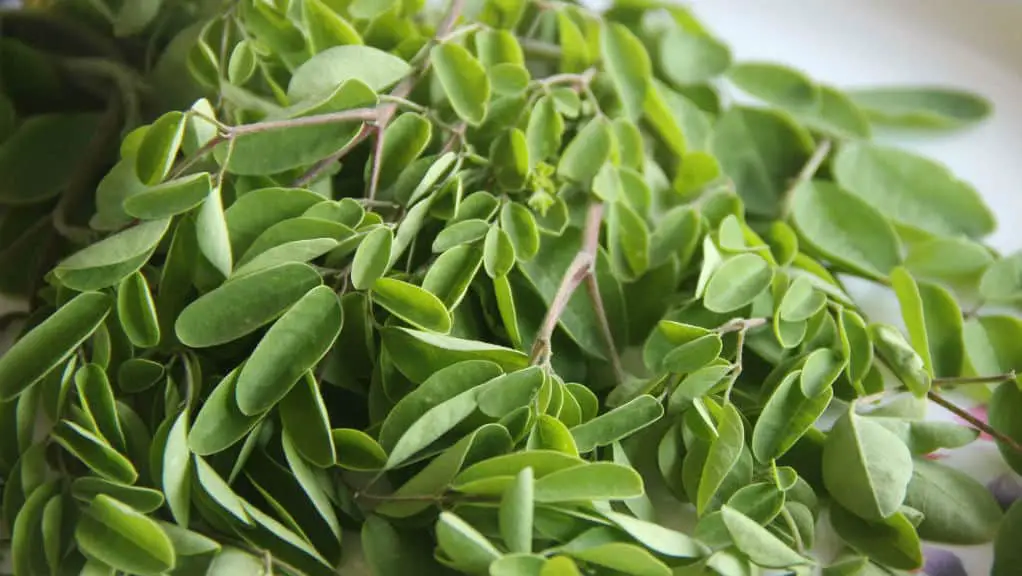
I’ve seen research documenting Moringa up to 12 meters/39 feet, but that does seem a bit rarer; experience and consensus state that 5-8 meters are common [x].
As soon as a Moringa seed sprouts out of the earth, it starts growing thin, oval-shaped leaves: first a few at the ends of delicate branches, and then so many they start to weigh the branches down.
The leaves are what we call tripinnate, which basically just means that each branch splits into smaller branches in a vaguely triangular shape.
Each individual leaf is small, normally hovering anywhere between a half-centimeter and a half inch.
Come summer, the trees start to erupt in small, white flowers with yellow stamens.
They don’t smell quite like most flowers; they smell a bit like the moringa leaves themselves, and a bit like perfume.
However you’d describe the smell, the flowers are endlessly attractive to honeybees; I’m pretty sure the bees in our area like them more than they like our actual garden flowers.
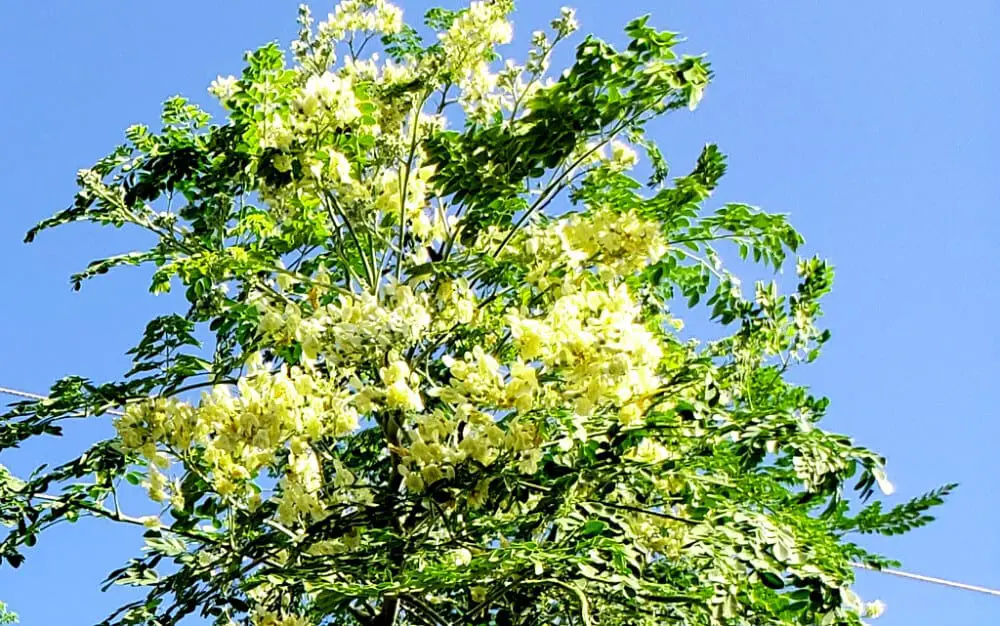
As soon as the flowers grow, you’ll start to see strange, thin pods emerge.
It might take you a couple of days to notice them; without fail, I’m never able to spot the moringa pods until they’re already about six inches long.
They start out about as thin as a q-tip, but the longer they grow, the thicker they get.
By the time the pods are ready to eat, they’re as thick as the handle of a screwdriver, and about as long as my arm.
They’ll also be bumpy, because inside each drumstick are seeds, typically anywhere between 10 and 50 (although we’ve found 10-25 to be the most common amount) [x].
The seeds are triangular and surrounded by a thin skin that looks a little like tiny wings. Immature seeds are a pale white-green color and are very soft.
The riper they get, the more they start to harden and brown until they look a bit like a nut.
Interested in growing Moringa? We suggest these articles to get started:
- How tall does the Dwar Moringa Tree Grow?
- Why are My Moringa Leaves Turning Yellow?
- How and WHen you Should Harvest your Moringa Seeds.
- Can Moringa Grow Indoors?
- How Fast Does Moringa Grow?
- How you should Prune your Moringa Tree
- Is Moringa a Good Fertilizer?
- Can You Grow Moringa in Colder Climates?
- Is Moringa Frost Tolerant?
Is Moringa Safe to Eat?
Short Answer: Yes.
Medium Answer: Yes, but there are some parts that are more edible than others.
Humans have consumed every part of the Moringa tree for thousands of years, both as food and as medicine. Moringa leaves are eaten fresh, dry, and as a powder. The drumsticks are added to soups and stews. The immature seeds are eaten like nuts, and the seed oil is used in cooking as well. Even the roots, flowers, and bark get used: the roots for their horseradish-like taste, the bark, and flowers for purported medicinal qualities.
Unfortunately, eating the roots, flowers, and bark in excess can absolutely have negative side effects.
The root bark contains two different alkaloids which act as cardiac stimulants and which have anti-ulcer properties.
Those alkaloids can be very dangerous when not in specific doses, however. The roots themselves may taste a bit like horseradish, but even if you scrape off the bark (which you should always do), in excess quantities the roots themselves can be harmful as well [x].
I’d personally advise not eating the roots, flowers, or bark. There’s a lot of emerging research that shows that, in exact doses, extracts can treat ulcers, arthritis, and other ailments. But at this point there just hasn’t been enough research on what those correct doses are.
So, roots, flowers, bark: better to avoid.
But most people aren’t eating roots, flowers, and bark. Most people are eating the pods, the leaves, and the seeds. Are those safe?
Yes.
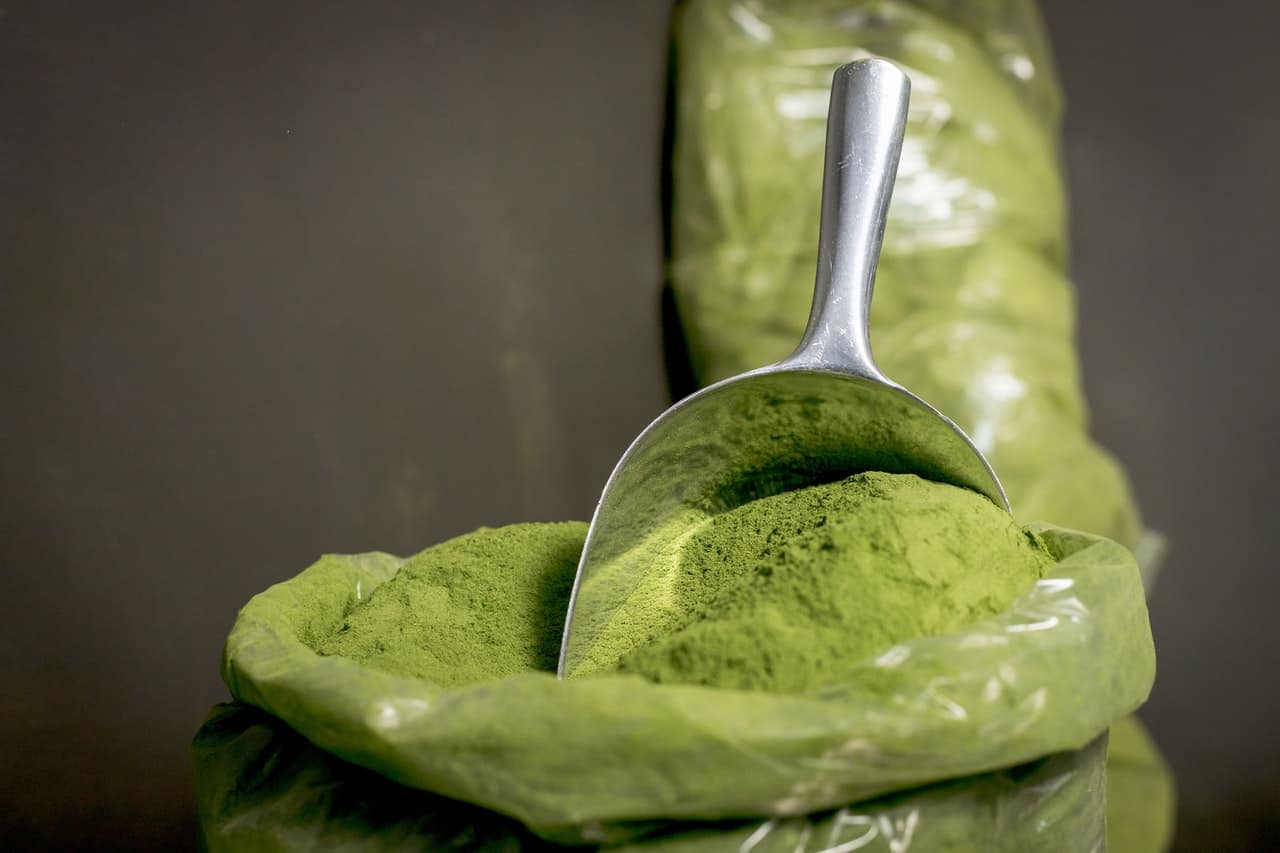
That’s a pretty large claim to make about what some people might consider an unknown commodity*. Scientists have spent hundreds of years studying the safety of fruits and vegetables, and we’ve spent thousands eating them. We know that strawberries, raspberries, and cherries are safe. How can we know the same about a food product many of us have barely heard of?
Answer: Science! And also history.
Researchers have used powdered moringa leaves in just about every human study conducted on the effects of Moringa. Each of these studies focused on different doses. In one study, participants were given a single dose of 50 grams [x].
In another study, participants were given a daily dose of 8 grams over a period of 40 days [x]. Other studies continue along this vein: lower doses (typically between 4 and 8 grams) given over a period of several weeks, and larger doses given once.
Participants reported no negative side effects. In fact, the only side effects were positive: lowered cholesterol and blood sugar.
All available animal and in vitro studies continue to support this as well; the conclusion is given by Sidney J. Stohs and Michael J. Hartman in their 2015 Review of the Safety and Efficacy of Moringa oleifera states that Moringa leaves “appear to be exceedingly safe at the doses and in the amounts commonly utilized [x].”
All of that research supports a thousand-year history in which people have used Moringa in their food preparation processes.
The answer is yes: Moringa is safe.
*We’re ignoring for a bit the ethnocentrism of assuming that a food product isn’t safe just because it’s not native to your location.
Those that are pregnant should read this guide first:
How Much Moringa Is Safe to Eat?
This question is more interesting because Moringa isn’t yet so widely available that you’ll find recommended serving sizes in every store.
More information on what parts of the moringa tree you can actually eat, and how much of it is found here:
- Can you Eat All Parts of the Moringa Tree?
- Dangers of Moringa Oleifera
- How Much Moringa can you take every day?
- Is it safe to eat moringa everyday?
In order to figure out these exact numbers, we’re going to have to do the math!
Or, more accurately, I’m going to have to do the math. You can just follow along.
A 2009 study found that doses of Moringa aqueous leaf extract were safe at 2000 mg/kg [x]. Now, an aqueous leaf extract isn’t going to have an identical chemical profile to the leaf powder we’ve seen in most human studies. This first math problem is just a thought experiment, though, so let’s use that for now.
We’ll start with 2000 mg/kg. 2000 milligrams is the same thing as 2 grams; I’ll use that for simplicity. Let’s assume we’re talking about a smaller individual: someone who weighs 54 kg (or just under 120 pounds). That person could consume 108 grams of Moringa without suffering any negative side effects.
The average 0-sized capsule holds about half a gram of powder.
In other words, if you weigh 120 pounds, you could eat 216 capsules of Moringa powder at once and still be okay.
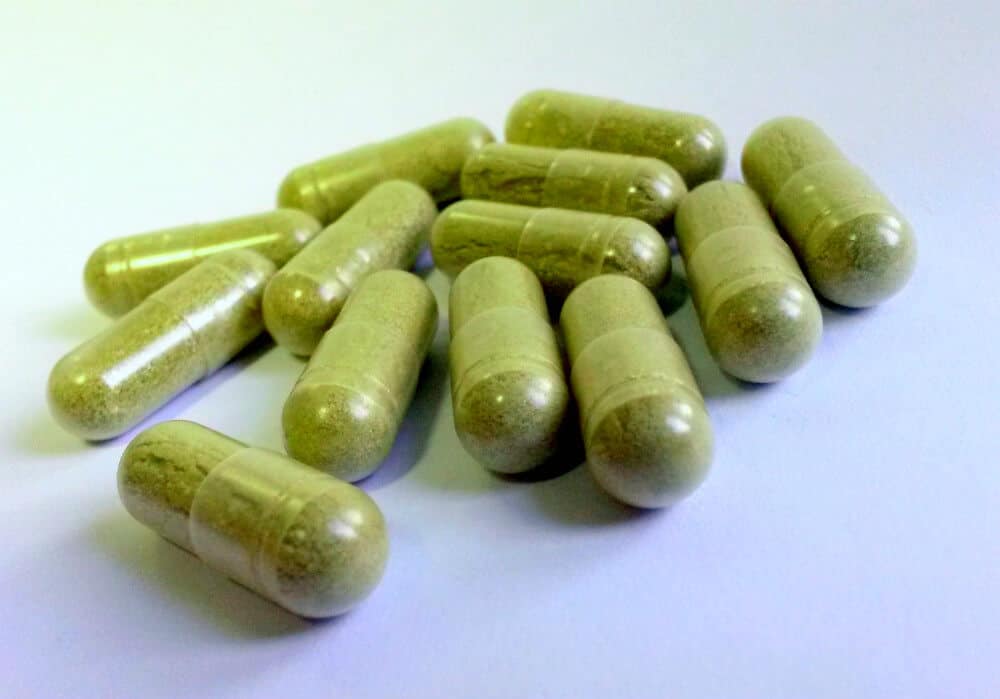
Please don’t eat 216 capsules of anything at a time. As a general rule, eating 216 of anything in a single sitting is probably a bad idea. Even if you weigh 240 pounds and could theoretically eat 432 capsules while still being fine, please don’t eat 216! Don’t do it!
Like I said before, though, the aqueous leaf extract is not going to have the same properties as fresh, dry, or powdered leaves.
Also, none of the studies above force-fed its participants 216 Moringa powder capsules. Another also: it’s always better to start with a smaller dose.
The smallest dose I could find in a study was 4.6 grams. In a 2010 study on patients with Type-2 diabetes, Nambiar et al. [x] gave their treatment group a daily dose of 4.6 grams over a period of 50 days.
The patients reported a decrease in total plasma cholesterol and an increase in HDL, all without any adverse side effects. But that’s not what we’re paying attention to! We’re paying attention to the dose.
4.6 grams. In other words, each participant took enough Moringa to fill 9 capsules every single day.
That was the smallest dose I could find. In other studies, researchers gave participants daily doses of 7 grams (14 capsules), 8 grams (16 capsules), or a one-time dose of 50 grams (a whopping 100 0-sized capsules).
Most of you are probably not going to take 9 Moringa powder capsules a day. You don’t need to. But you could. Every human research study on the effects of Moringa has said that doing so would be safe.
Conclusion: Don’t shovel moringa into your mouth by the bowlful. Otherwise, you’ll be fine.
Now that we’ve discussed the background and safety, let’s talk about nutrition.
Before proceeding further, if you do not know enough about the other ways you can take Moringa Oleiferia, I recommend reading the following articles.
- Can you Take Moringa without Eating?
- What does Moringa Smell like?
- What are some of the best Moringa Recipes?
- How to make Moringa Oil
- How to Make Moringa Powder
- 15 best things to add to Moringa Tea!
- Who should not take Moringa?
- Moringa Oil Body Butter Recipes
- Making your own Moringa Oil Lotion Bars
- Tasty Moringa Juice Recipes
- Is Moringa Safe For Dogs?
Moringa Nutritional Facts
Obvious fact: most of us don’t get nearly the amount of vitamins and nutrients that we should.
According to a 2015 report by the Office of Disease Prevention and Health Promotion, 87% of Americans have vegetable intake below the recommended amount. 75% have fruit intakes below it as well [x].
Most middle- and upper-class Americans have the ability to eat fruits and vegetables whenever they want. However, there are places all over the world (and indeed in our own country) where the average person isn’t able to access proper nutrition.

Humans need a healthy diet. That can be difficult for a number of reasons. Let’s talk about the ways that Moringa can help with that.
Three different studies [x] compared the gram-for-gram nutrient profiles of Moringa leaves to other fruits and vegetables. They found the following:
- Moringa leaves have 10 times more vitamin A than carrots,
- 17 times more calcium than milk,
- 7 times more vitamin C than oranges,
- 9 times the protein found in yogurt,
- 15 times more potassium than found in bananas,
- 25 times the iron found in spinach and 14 times more iron than beef,
- And they have large amounts of all 9 essential amino acids.
A Moringa tree’s nutrient profile is always going to be dependent upon the soil and weather in which it grows.
One study, for example, [x] showed that the trees grown in Nigeria tend to have fewer nutrients than those grown in India. No matter where you grow, however, the results are amazing.
What’s more amazing is that what you see above isn’t the end of it.
The above table comes from a 2016 study conducted by L. Gopalakrishnan et al. [13]. In that study, you’ll find a comparison of the nutritional makeup of any given 100-gram sample of Moringa. That includes fresh leaves, dry leaves, leaf powder, seeds, or pods.
That table isn’t complete. It doesn’t count the amino acids. It doesn’t include the high levels of vitamin K (necessary for blood coagulation), manganese (good for bone strength and growth), or zinc (important for DNA/RNA synthesis, which is, to be frank, a big deal). But it makes it very easy to see exactly how many of these nutrients 100 grams of Moringa can contain.
To learn more about nutrition within Moringa Oleiferia, I suggest reading the following articles.
What is Moringa Used For?
Moringa has been used for millennia to treat and/or prevent dozens of different ailments, from diabetes to ulcers to inflammation.
Over the past several decades, scientists in the West have finally begun to study Moringa in laboratory settings.
For a very long time, a lot of those studies primarily focused on animal subjects. More and more over the last few years, though, we’ve started to see an increase in human studies.
What does that mean?
It means that we have a lot of evidence suggesting that Moringa is good for a whole lot of stuff. We don’t have enough evidence for doctors to start prescribing Moringa supplements like they would pills. That’s not going to happen for a while; in the world of modern science, 100% certainty requires dozens of human trials and thousands of human participants.
But we do have enough evidence to say that Moringa has a good chance of fighting common diseases. Let’s look at that evidence.
General information about other superfoods, and how long it takes for Moringa to start working can be found below:
- How long does it take for Moringa to Start Working?
- Moringa vs Kratom
- Moringa and Maca
- Can Moringa Oleifera Lower Uric Acid Levels?
Can Moringa Be Used as an Anti-Inflammatory?
Short Answer: Yes.
Moringa Oleifera’s anti-inflammatory properties are arguably what it’s most known for, and probably one of the properties that have been studied most thoroughly.
Inflammation isn’t necessarily a bad thing. Our immune systems use inflammation for a reason: so that our white blood cells can protect our bodies from infection.
The problem is that sometimes inflammation occurs or continues even when there’s no infection to fight.
That can result in everything from pain and swelling to more serious diseases and afflictions like arthritis, tissue death, and some types of cancer [x].
This is where Moringa comes in.
One of the reasons fruits and vegetables are so good for us is because of something called flavonoids.
Flavonoids are a type of plant chemical found in almost every fruit/veggie. They’re antioxidants. They’re anti-inflammatories.
In fact, over the last few years, scientists have started trying to figure out whether flavonoids themselves are the reason fruit- and vegetable-heavy diets work towards preventing cancers and other diseases.
Moringa, if it isn’t obvious, has a whole lot of flavonoids.
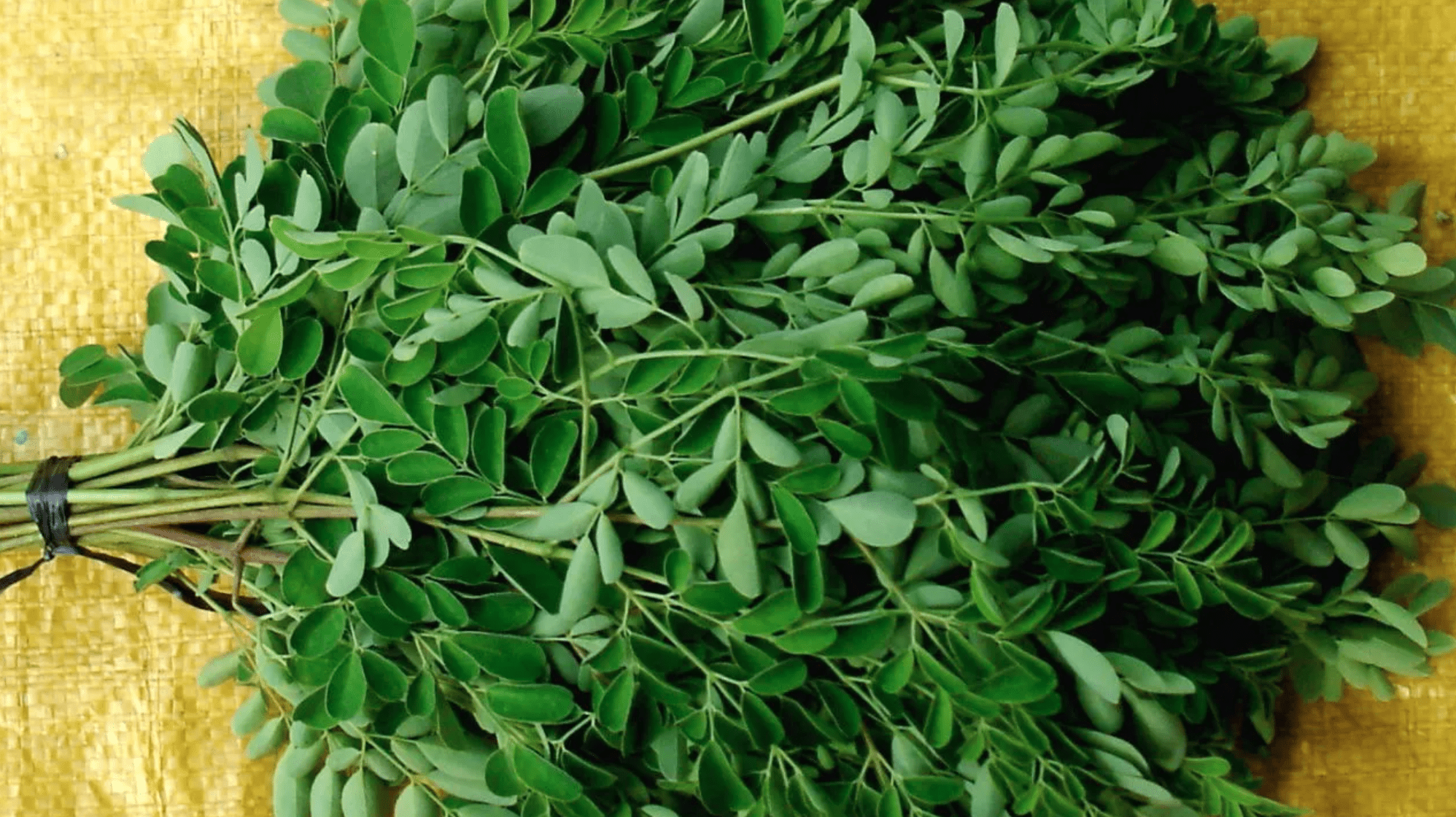
Moringa has been used as an anti-inflammatory for thousands of years. In the past few decades, researchers have started testing to see whether Moringa actually does reduce inflammation, including IBS, UTIs, and acute colitis [x, y, z].
In each of these studies, the participants treated with Moringa saw a decrease in inflammation.
The control groups—those who did not eat Moringa—saw little to none.
Some of these studies were conducted with Moringa bark extract. Others were conducted with leaves. In all of these experiments, the results show that there does seem to be a powerful link between Moringa use and reduced inflammation.
And speaking as someone who occasionally used to have joint pain? Moringa works.
Is Moringa an Antibiotic?
I’d like to begin with a quote, because it’s probably one of the best quotes I’ve ever read in a scientific article, and given how passive-aggressive some scientists are, that’s a feat:
Antibiotic Activity: This is clearly the area in which the preponderance of evidence—both classical scientific and extensive anecdotal evidence—is overwhelming. The scientific evidence has now been available for over 50 years, although much of it is completely unknown to western scientists.
-Moringa oleifera: A Review of the Medical Evidence for Its Nutritional, Therapeutic, and Prophylactic Properties. Part 1.
For future reference: if you ever see the phrase “preponderance of evidence” in an article, the author means “I genuinely cannot believe we’re still arguing about this.”
A note: antibiotics are actually part of a larger category called antimicrobials. Like their name implies, antimicrobials either kill or inhibit the growth of microorganisms. And they actually come in a pretty wide variety. Disinfectants are antimicrobials! Antiseptics are antimicrobials! And, of course, antibiotics are antimicrobials, too. Every time you see the term “antimicrobial” used in relation to Moringa, you can assume that it covers antibiotic properties.
Over the past several decades, scientists have completed study after study [x, y, z] assessing the antibiotic properties of Moringa. In study after study, those scientists concluded that Moringa works as an antibiotic. One 2016 study found that Moringa fought 13 different types of bacteria (or nearly 70% of the ones tested) [x], and another study went as far as stating that the effect of Moringa leaf extract on different types of bacteria, including E. coli and Staph aureus, was “significant [x].”
In other words, we have a lot of scientific evidence saying that Moringa works as an antimicrobial and antibiotic against various types of microorganisms, including some of the more dangerous ones. We also have thousands of years of anecdotal evidence and in-person accounts.
Conclusion: It Surely does seem like it.
Can Moringa Help Manage Diabetes?
Short Answer: science says yes.
Moringa has been the subject of dozens of studies over the years, but it’s still in the early stages of academic research.
Because of this, most studies so far have used animal research subjects. Which is good! But it’s not as good as research conducted on people would be.
There’s one exception: diabetes.

Scientists have conducted a lot of formal research on how Moringa can help those with diabetes. In one study on Type 2 diabetic patients, researchers found that a daily dose of 8 grams of the powdered leaf (given in tablets) lowered fasting blood glucose by 28% (compared to a control group that was not given any Moringa), postprandial blood glucose by 26%, total cholesterol by 14%, and LDL-cholesterol by 29% [x].
Another study, also conducted on Type 2 diabetic subjects, showed a 29% decrease in postprandial blood glucose, and a .4% drop in A1C [x], while a third showed that a bi-weekly dose of 4 grams of Moringa helped significantly increase insulin production in healthy subjects [x].
Those studies have focused on Type 2 diabetes, though. What about Type 1?
Congratulations! Scientists have evidence that the use of Moringa can significantly reduce Type 1 diabetes, too. One study used doses of 50 and 100 mg/kg of Moringa powder and found that the subjects experienced significant improvements, especially at the higher 100 mg/kg dose [x]. Another study used 200 mg/kg, again for Type 1 diabetes, and also saw a great reduction in diabetes symptoms [x].
There haven’t been as many human studies conducted for Type 1 diabetes as there have been for Type 2, as far as I’ve been able to find. However, the authors of nearly every study I’ve mentioned have all said the same thing: the results suggest that M. Oleifera can be used to treat, or even cure, Type 1 diabetes in humans.
Can Moringa Help Me Sleep?
Yes.
The “how” and “why” are a bit nebulous here; most of the studies conducted over the last few decades have focused on Moringa’s nutritional benefits and its ability to fight diseases.
Even searching specifically for “Moringa + sleep” doesn’t offer many scientific articles explaining exactly why Moringa seems to help you sleep.
I can attest personally that it does. I spent years struggling to sleep. Melatonin gummies worked okay, but never as much as I wanted.
It wasn’t until I began taking Moringa that my sleep went from “reluctant” to “like a baby.”

For those of you like me who prefer data to personal testimonies, though, let’s look at the most common theory about why one of the benefits of Moringa is improved sleep.
Moringa, as I mentioned above, is one of the few foods out there that contains every single essential amino acid. The amino acid we’re focusing on is called tryptophan.
Tryptophan is one of the rarest amino acids. Your body uses it to create niacin, which in turn helps create serotonin.
Serotonin has a lot of jobs. One of those jobs is to help you sleep.
Now, increasing tryptophan levels by eating loads of tryptophan-containing foods may not directly increase serotonin; most tryptophan doesn’t actually go to the brain. However, several studies have shown that tryptophan does have an impact on the amount of serotonin your body produces. This, in turn, has an impact on sleepiness [x, y].
Moringa has tryptophan. It has more of it than most vegetables do. Tryptophan helps create serotonin, and serotonin is a precursor to melatonin. And melatonin is really good for improving the quality and quantity of your sleep.
Conclusions: one of the benefits of Moringa includes helping improve the quality and quantity of your sleep.
Can Moringa Help Me Manage My Anxiety?
Short Answer: Probably.
Long Answer: Our diet has a very large effect on our brains, but it’s not the only thing that has an effect on it. Still, while moringa might not cure your anxiety, there’s every chance it might help.
There is a distinct relationship between the foods we eat and the ways our brains work.
Every part of our body connects to another. Some of those connections are really obvious; if you’ve ever injured an arm, you’ve probably realized a day or two later that your back starts to hurt, too. Because you’re suddenly favoring one side of your body, the rest of your body starts to suffer, too.
One of those connections is called the gut-brain axis, and it works just like it sounds.
The brain-to-gut part is pretty obvious; your brain sends signals to your digestive system telling you when it’s time to eat, for example. But it works the other way around, too; your gut also sends signals to your brain.
In other words, every protein, nutrient, and amino acid we consume has some effect on the rest of us. The most obvious effect is nutrition, of course: eating a healthy diet is going to result in a healthier body. But more and more, scientists are finding that the things we eat have an effect on behavior, as well [x].
We talked about tryptophan and serotonin above; they come into play again.

We know that serotonin has an effect on mood. It’s not the only thing that affects mood; the reason SSRIs and other antidepressants don’t have a universal success rate is because our brains are complicated.
There’s not always one clear cure for anxiety or depression. But serotonin does have an effect on everything from mood and cognition, and as we learned above, the tryptophan in Moringa creates serotonin.
Several studies have looked at the effect that low-tryptophan diets have on both human and animal subjects. Many of those studies echo the facts above: diets low in tryptophan often result in higher levels of anxiety and impaired episodic memory.
Worryingly, a review of those studies shows that low tryptophan affects at-risk populations the most: those with diseases like Parkinson’s [x], those who have a family history of alcoholism or depression, and those with obsessive-compulsive disorder [x].
Tryptophan is one of the 9 essential amino acids. It’s also the amino acid hardest to get. If we don’t get enough of it, it can absolutely have an effect on your mood.
We’ve also studied what happens when you do get enough of it. Serotonin increases. Anxiety decreases [x]. Sleep improves. Again and again, study after study has proven the existence of the gut-brain axis.
The things we eat affect who we are; anyone who’s ever been hangry knows that. Levels of tryptophan in the fruits and veggies we eat can have more of an effect than most. And one of the benefits of Moringa is that it has a great deal of tryptophan.
Will Moringa Improve My Digestive Health?
There’s an 80% chance that when you say “digestive health,” you mean “will Moringa help me have healthy bowel movements,” in which case the answer is yes. There’s a 20% chance you mean overall digestive health, in which case the answer is also yes.

There are a lot of things that affect digestion: exercise, water intake, diet, and stress. One of the most important things, however, is fiber. Foods with high fiber improve both digestion and the prevention of colon cancer [x]. Fiber absorbs water, bulks up your stool, and helps prevent constipation.
One of our largest sources of dietary fiber is vegetables, especially non-starchy ones. This includes veggies like cauliflower, rhubarb, and–of course–Moringa.
Now, this is one of the only cases where the leaves probably aren’t the best source of fiber. While the leaves do have more fiber than you’ll find in most places, they don’t actually come close to the recommended daily value.
According to Aduna, a 10-gram serving of leaf powder will give you 2.4 grams of dietary fiber [x]. 2.4 grams of fiber is good! But I personally don’t eat 10 grams of Moringa powder each day. My daily powder serving is closer to 4 grams. And for someone who’s never had Moringa, I’d actually recommend starting with half of that.
A 4-gram serving is less than 1 gram of fiber. According to the Institute of Medicine, the daily recommended amount of fiber for adults is 38 grams for men under 50, 25 grams for women under 50, 30 for men older than 51, and 21 for women older than 51. 1 gram of fiber, for me, would be 4% of my recommended daily value.
We can do better!
Studies have shown that immature pods contain 46.78% fiber [x]. One cup of sliced Moringa drumsticks will give you a little over 3 grams of fiber, or about 12% of the DV for women under 50 [x].
Specific fiber information on the seeds is harder to find; most studies on Moringa and digestion have focused on the drumsticks and leaves. However, research has shown that one of the benefits of Moringa is that immature seeds can be used to help treat digestive issues like inflammatory bowel diseases.
Because most research has shown that the drumsticks have more fiber than the other edible parts of the Moringa, that’s what I’d recommend starting with. However, even the leaves and immature seeds are also solid sources of fiber, and will likely boost not only your digestive health but also the end result of digestion as well.
Can Moringa Help With Weight Loss?
Short Answer: Sure, but only slightly more than any other vegetable.

Moringa is probably one of the purest examples of a superfood. Moringa’s benefits include anti-inflammatory and antibiotic abilities. It can help manage (and, in some cases, actually cure) diabetes. Moringa contains so many vitamins and nutrients that eating even a gram or two can exceed some of your recommended daily values.
Moringa is also low in calories.
The table below shows the number of calories in 100 grams. For comparison’s sake, a cooked Quarter Pounder hamburger patty from McDonald’s weighs about 70 grams. In other words, a hamburger patty’s worth of fresh Moringa leaves will clock in at about 65 calories.
(For the record, do not eat a hamburger patty’s worth of Moringa. That’s way too much Moringa. Stick to a couple of grams like the rest of us.)
As far as we know, though, Moringa benefits do not include the ability to speed up your metabolism. In other words, adding a few teaspoons to your meal preparation isn’t going to directly affect your weight. You could certainly substitute it in place of higher-calorie foods. Adding Moringa to pasta, for example, instead of adding cheese, would give it an extra kick of flavor while also dramatically reducing calories. In and of itself, though, Moringa’s not going to directly cause you to lose weight.
However:
Moringa does have an effect on sleep. Dozens of studies (and years of personal experience) have shown that proper sleep speeds up your metabolism. Conversely, a lack of sleep directly leads to an increase in appetite and an intenser craving for fatty foods.
The stuff we eat affects everything about us. Moringa is low in calories and high on the ability to help you sleep. In other words, yes, one of the benefits of Moringa includes the ability to help you lose weight.
Can Moringa Lower My Cholesterol?
Short Answer: Yes.
There’s not really a medium answer for this question; most of the research has been pretty straightforward.
Moringa’s effect on cholesterol has been studied in both human and animal subjects. In a 2010 study conducted on patients with Type 2 diabetes, a daily 8-gram dose of Moringa not only decreased fasting and postprandial blood glucose but also decreased total cholesterol and LDL cholesterol by 14% and 29%, respectively [x].
In another study conducted on rabbits that had been fed a high-cholesterol diet, rabbits were given a daily dose of 100mg/kg. Serum and lipoprotein cholesterol were reduced by 50% and 75%, and carotid plaque decreased by 97% [x].
Also: not only can Moringa help decrease your cholesterol, it can also decrease the cholesterol found in your eggs.
In one of my favorite studies, 120 chickens were given Moringa leaf meal mixed into their feed at varying doses [x]. The cholesterol in their eggs was then measured. What happened?
Antioxidants increased and cholesterol decreased, that’s what happened. It’s like the water cycle, except instead of water, it’s eggs. Nature is amazing.
More information about Moringa and Cholesterol can be found here:
Does Moringa Have Antioxidants?
Short Answer: Yes
Long Answer: Really, really yes. In fact, a number of Moringa’s health benefits actually come from its high-antioxidant profile.
“Antioxidant” is a term that gets thrown around a lot. We know that antioxidants are good for you! We know that they have positive effects on our health! But if you asked the average person to explain exactly what an antioxidant is, you wouldn’t get an accurate answer.
A thorough explanation of antioxidants is beyond this article’s purview, though I’ll link to a good one in just a minute. To put it as simply as I can, though, the purpose of antioxidants goes something like this:
The human body is made up of atoms, and those atoms join together to form molecules. Each molecule has to have a certain number of electrons. If you don’t remember high school biology, electrons are parts of an atom that have a negative charge.
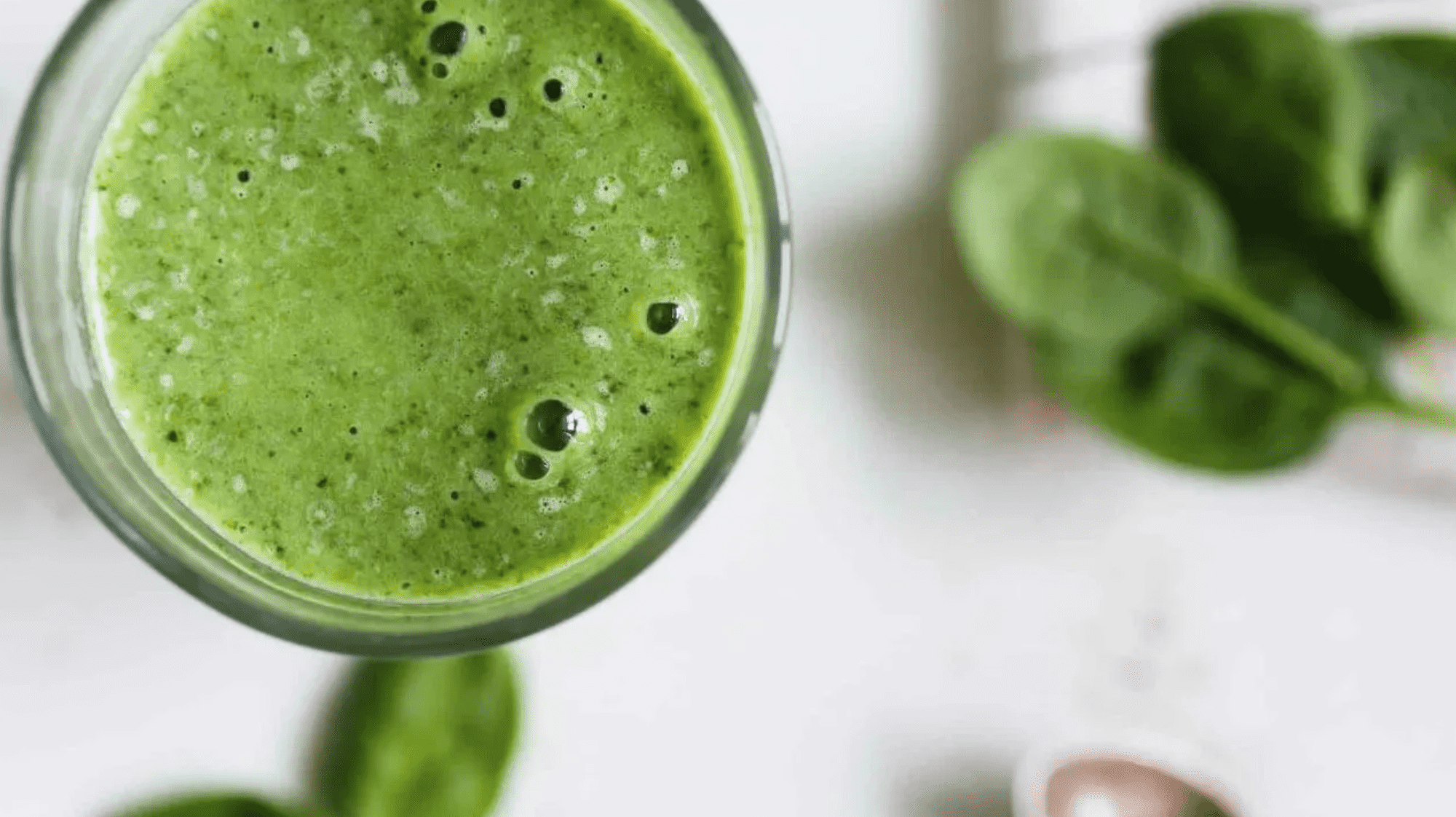
But what happens if an atom loses an electron when it’s not supposed to?
The answer is free radicals! Free radicals are unstable. We do not want our molecules to be unstable. When anything inside our body is unstable, things start to go wrong!
That’s where antioxidants come in. An antioxidant will find a free radical and go “Huh! That doesn’t look right!” And then it’ll give the free radical enough electrons that the free radical stops being a free radical. Instead, it once more becomes a regular, stable molecule. Problem solved, all is well.
If you want to learn more about antioxidants and free radicals, I’d recommend starting with this Healthline article. But for the purposes of this guide, let’s go back to the benefits of Moringa.
Moringa is basically an overflowing garden of antioxidants.
The leaves contain multiple types of antioxidants: flavonoids, phenolics, carotenoids, and ascorbic acid [x]. And study after study has shown that aqueous extracts from the leaves have the ability to find free radicals and prevent/inhibit their damage to DNA [x, y].
In fact, all parts of the tree have a sort of antioxidant ability, including flowers, seeds, and stems. Every study I’ve found states clearly that the most antioxidants are found in the leaves, though, so I wouldn’t worry too much about trying to prepare the seeds or drumsticks unless you enjoy the taste of them [x].
Moringa as a whole and Moringa leave in particular, are a huge source of antioxidants. They’ve been used as such for centuries, and science has borne that out.
Can Moringa Benefit Your Brain?
Short Answer: Yes.
Medium Answer: Most food has some type of impact on your brain; we talked about the gut-brain axis above. But Moringa has more of an impact than most.
In the sections above on anxiety and sleep, we discussed the way that the tryptophan in Moringa can impact your stress levels, sleep, and mood. That, however, is not the be-all-end-all.
Over the past few years, researchers have conducted several studies on Moringa and its neuroprotective benefits (or, in layman’s terms, the ability to keep your brain healthy).
In one study, Moringa leaf extract was given to animals with dementia [x]. The result was an improvement in spatial memory and antioxidants. In another study, researchers found that an extract of Moringa leaves reduced brain damage and dysfunction caused by cerebral ischemia [x].
The researchers concluded that this was likely related to Moringa’s antioxidants.
Antioxidants have a big role when it comes to protecting our brains. The reason why is because of something called ROS: reactive oxygen species. Wikipedia has a really good article on it here. Essentially, a little bit of ROS is natural. Too much of it, though, can result in damage to our cells, proteins, and DNA. On top of that, there are a lot of environmental factors that can cause your body to produce too much ROS: drought, UV exposure, heat exposure, and nutrient deficiency.
Antioxidants help defend against that, and Moringa is full of antioxidants.
Also, because Moringa is the plant equivalent of Hermione Granger, studies have shown that Moringa can stimulate neuronal growth, increase the number and the length of dendrites in your nerve cells, and prevent neurotoxicity [x, y].
The answer to the question is yes: one of the many benefits of Moringa is its ability to protect your brain.
Looking for more benefits of Moringa? We go over a bunch of these different benefits in the articles here:
- Moringa and Hypothyroidism
- Does Moringa Help you Sleep?
- Moringa Mint Tea Benefits
- Moringa for Energy
- Moringa and Libido
- Moringa Benefits for Hair
- Moringa Tea Benefits
- Moringa Benefits for Males
- Can Moringa Improve my Health?
Can Moringa Treat Cancer?
This is probably the most difficult question to answer, which is why I’ve saved it for last. The easy and honest answer is “probably.” A great deal of research out there has concluded that Moringa does have anti-cancerous properties.
But it’s not going to replace chemotherapy or radiation. It can be used to help treat cancer. It has the ability to help prevent cancer. But no research out there has concluded it’s going to cure cancer. Given how many different types of cancer there are, I’d be suspicious if anyone claimed differently.
Let’s look a little bit at the science.

Cancer is currently one of the leading causes of death in the United States, second only to heart disease. In 2017, nearly 600,000 people died of cancer; in other words, cancer-related deaths made up 21.3% of all deaths within the U.S. [x]
Cancer is a specter many of us grow up with. Even if we’re privileged enough not to have to deal with it ourselves or within our families, everyone knows a person who has suffered from cancer: who has either survived it, is currently fighting it, or has died from it.
We also know that many of the treatments for cancer damage our bodies only slightly less than the damage the cancer cells. Radiation and chemo wage war on cancer, true, but they do it within the battleground of our bodies.
It can be very, very tempting to pin your hopes on a cure for cancer that doesn’t involve chemo. It’s what every doctor in the world wants. It’s why there’s been so much research on the role that our diet can have in combating and preventing disease.
But the truth is that 1) every type of cancer is different, 2) even if scientists cured one type of cancer, that cure probably wouldn’t apply to all types, and 3) no food is going to destroy every cancer cell in our bodies.
Please do not stay home sipping Moringa tea if you believe you might have cancer. Talk to your doctor.
All of this said, there has been a lot of research that shows that Moringa does have anti-cancerous benefits.
One 2011 study showed that an aqueous extract of Moringa leaves helped fight tumor cells and prevent cell damage [x]. Another 2014 study showed that Moringa could also act like a cancer-fighting drug against different types of cancer cells. Moringa induced apoptosis (cell death), slowed down or stopped the growth of tumor cells, and decreased ROS levels in lung cancer cells. [x]
In a third, similar study, researchers again found that Moringa was able to slow down and prevent the growth/spread of lung cancer cells [x].
The niazimicin in Moringa is an anti-tumor agent [x]. The leaves of Moringa are anti-cancer agents. The root core, in a lab setting, was found to induce cell death even more than the leaves do [x]. Research has suggested that the ROS produced in Moringa attacks only cancer cells [x].
We know that several types of vegetables (especially cruciferous ones like broccoli and bok choy) are able to reduce the risk of breast, lung, and colon cancers [x].
Moringa does the same thing. Both its leaf and bark extracts slow or stop the growth of cancer cells, including breast, pancreatic, and colorectal ones [x]. The glucosinolates in Moringa form isothiocyanate, an anticancer agent, that can inhibit the growth of (among others) prostate cancer cells [x].
Final thoughts on Moringa and how it can help you
There’s a good reason Moringa is called a superfood: it’s because it is. Moringa can help treat everything from anxiety to sleep disorders to diabetes, and as we learn more about it, its benefits seem only to grow.
This is only an introduction; we’ve barely touched the surface of what Moringa can do. Continue exploring the website, and you’ll find even more detail.
